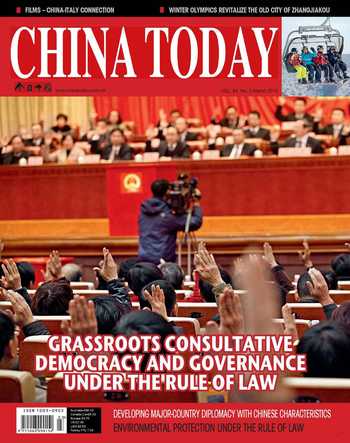Economy
RMB Enters Top Five World Payment Currencies
Last December the Chinese Renminbi (RMB) overtook the Canadian and Australian dollars to become one of the worlds top five most frequently used currencies, according to a recent report. The report, issued by the Society for Worldwide Interbank Financial Telecommunication (SWIFT), indicates that the RMB now trails the Japanese Yen, British pound, Euro and U.S. dollar as the fifth most frequently used currency.
“It is a great testimony to RMB internationalization and confirms its transition from an ‘emerging to a ‘business as usual payment currency,” Wim Raymaekers, head of banking markets at SWIFT, said in a statement.
SWIFT data show that the RMB reached a record 2.17 percent share of global payments by value in December 2014. Over the last year, RMB payments grew in value by 102 percent compared to the 4.4 overall yearly growth for all currencies.
China is moving steadily along the path of RMB internationalization. So far 12 cities, including Hong Kong, London, Paris, and Sydney, have officially announced the establishment of offshore RMB centers.
Chinas Annual Tax Revenue Sets New Record
Chinas 2014 tax revenues reached RMB 10.3768 trillion, a new record for the country, according to the State Administration of Taxation(SAT), up 8.8 percent year-onyear. Out of the total, central tax revenues amounted to RMB 4.4973 trillion, a year-on-year increase of 7.4 percent; local tax revenues increased 9.9 percent year-on-year.
SAT Spokesperson Wang Lujin said that 46.3 percent of tax revenues came from secondary industries, an increase of 5.8 percent. Tertiary industry contributed 53.5 percent, an increase of 9.9 percent. The changes reflect the countrys improved industrial structure.
In addition, high-tech industry has seen its tax contributions grow rapidly compared with traditional industries. Service, data transmission, software and information technology have seen an increase of 11.7 percent in terms of yearly tax contributions, and tax revenues from leasing and business services grew by 20.4 percent. Both areas exceed the service industrys overall growth of 9.9 percent.
According to the tax authorities, it was not easy to increase tax revenues in 2014, considering the economic slowdown and tax slashes. Experts observed the effects of tax cutting measures. They noted that reducing taxes and replacing business taxes with value-added taxes are slowing down the countrys tax revenue growth.
Chinas M&A Rose 55 Percent in 2014
Mergers and Acquisitions(M&A) reached a record high in China last year, the number of deals amounting to 6,899, according to the latest report released by Pricewaterhouse Coopers(PwC). The total value of the deals surged to US $407 billion, a rise of 55 percent over 2013. Technology, consumer-related and financial services were the most active M&A sectors.
Cross-border M&A also grew briskly in 2014, spearheaded by private Chinese firms, with the number of deals jumping to 272.
According to PwC, Chinese companies will continue to engage in M&A activities, driven by reforms of Chinas state-owned enterprises (SOEs). Future mergers and acquisitions are likely to focus on such industries as telecommunications, media, retail, finance, real estate and healthcare.
Various factors spur the development of Chinas M&A market. Many industries are resorting to M&A to improve efficiency, and A-share listed firms seek more merger opportunities to achieve growth. In addition, both state-owned and private firms participate in overseas mergers.
Chinas Subway Manufacturer Inks Landmark U.S. Deal
China CNR Corporation Limited, a leading Chinese locomotive manufacturer, recently announced a subway export contract with the United States. It is the countrys first foray into the U.S. rail transit market.
China CNR will sell 284 subway trains worth RMB 4.118 billion (US $658 million) to the transportation regulator in Massachusetts, equipping Bostons Red and Orange subway lines, according to the announcement.
The subway trains are designed to run 102 kilometers per hour. With regular maintenance, they can run 129,000 kilometers per year for at least 30 years. Other features, like structural strength, control systems and safety all follow U.S. standards.
The Chinese company also plans to tap markets in New York, Washington D.C. and other U.S. cities. It will set up an R&D base in the country to promote localized production by recruiting and training locals.
China has been accelerating attempts to attract overseas investment in its rail technology, with cooperative talks underway in 28 countries. In 2014, China CNR signed export contracts worth over US$3 billion, a year-on-year increase of 73.5 percent.

